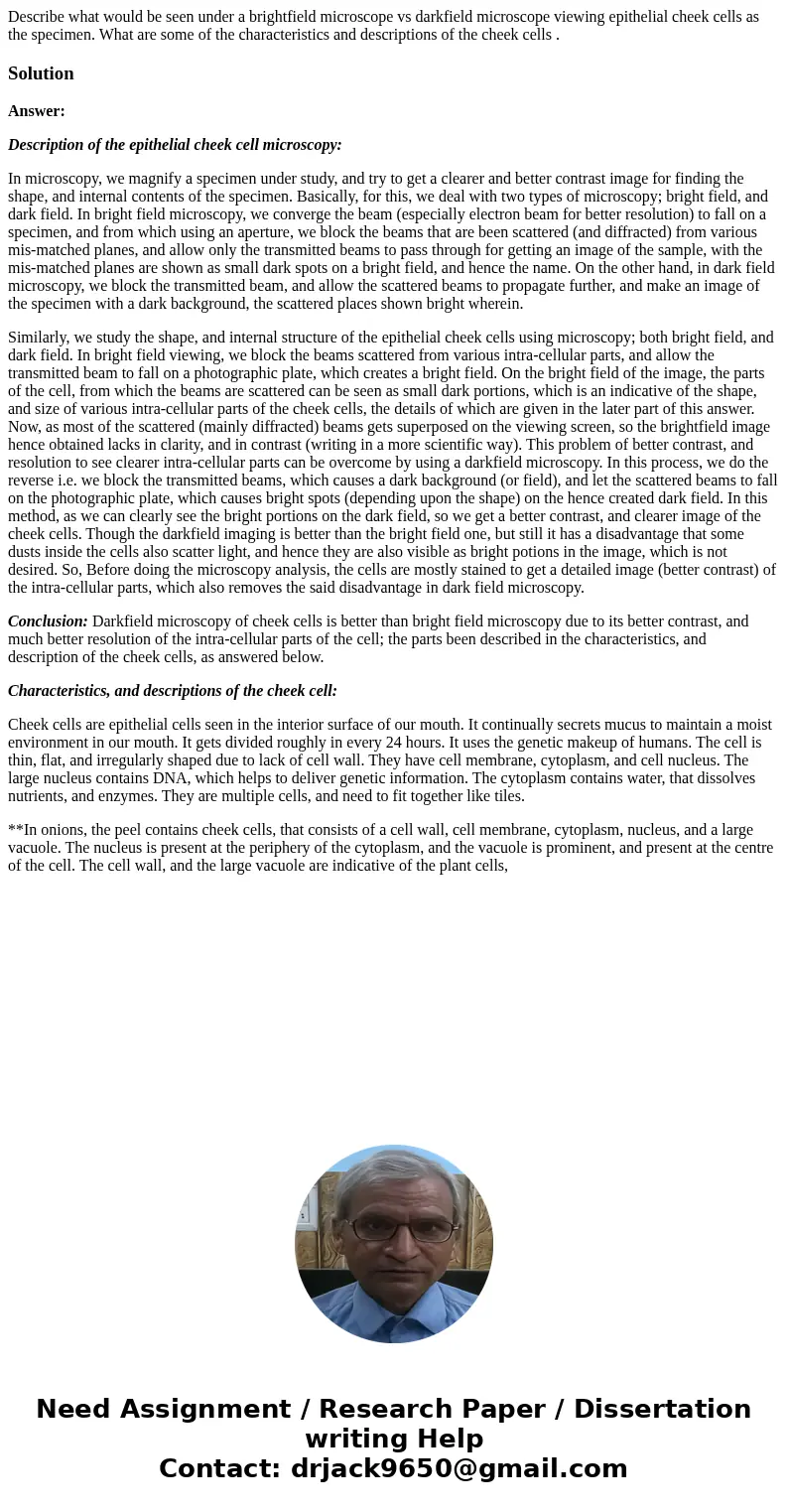Describe what would be seen under a brightfield microscope v
Describe what would be seen under a brightfield microscope vs darkfield microscope viewing epithelial cheek cells as the specimen. What are some of the characteristics and descriptions of the cheek cells .
Solution
Answer:
Description of the epithelial cheek cell microscopy:
In microscopy, we magnify a specimen under study, and try to get a clearer and better contrast image for finding the shape, and internal contents of the specimen. Basically, for this, we deal with two types of microscopy; bright field, and dark field. In bright field microscopy, we converge the beam (especially electron beam for better resolution) to fall on a specimen, and from which using an aperture, we block the beams that are been scattered (and diffracted) from various mis-matched planes, and allow only the transmitted beams to pass through for getting an image of the sample, with the mis-matched planes are shown as small dark spots on a bright field, and hence the name. On the other hand, in dark field microscopy, we block the transmitted beam, and allow the scattered beams to propagate further, and make an image of the specimen with a dark background, the scattered places shown bright wherein.
Similarly, we study the shape, and internal structure of the epithelial cheek cells using microscopy; both bright field, and dark field. In bright field viewing, we block the beams scattered from various intra-cellular parts, and allow the transmitted beam to fall on a photographic plate, which creates a bright field. On the bright field of the image, the parts of the cell, from which the beams are scattered can be seen as small dark portions, which is an indicative of the shape, and size of various intra-cellular parts of the cheek cells, the details of which are given in the later part of this answer. Now, as most of the scattered (mainly diffracted) beams gets superposed on the viewing screen, so the brightfield image hence obtained lacks in clarity, and in contrast (writing in a more scientific way). This problem of better contrast, and resolution to see clearer intra-cellular parts can be overcome by using a darkfield microscopy. In this process, we do the reverse i.e. we block the transmitted beams, which causes a dark background (or field), and let the scattered beams to fall on the photographic plate, which causes bright spots (depending upon the shape) on the hence created dark field. In this method, as we can clearly see the bright portions on the dark field, so we get a better contrast, and clearer image of the cheek cells. Though the darkfield imaging is better than the bright field one, but still it has a disadvantage that some dusts inside the cells also scatter light, and hence they are also visible as bright potions in the image, which is not desired. So, Before doing the microscopy analysis, the cells are mostly stained to get a detailed image (better contrast) of the intra-cellular parts, which also removes the said disadvantage in dark field microscopy.
Conclusion: Darkfield microscopy of cheek cells is better than bright field microscopy due to its better contrast, and much better resolution of the intra-cellular parts of the cell; the parts been described in the characteristics, and description of the cheek cells, as answered below.
Characteristics, and descriptions of the cheek cell:
Cheek cells are epithelial cells seen in the interior surface of our mouth. It continually secrets mucus to maintain a moist environment in our mouth. It gets divided roughly in every 24 hours. It uses the genetic makeup of humans. The cell is thin, flat, and irregularly shaped due to lack of cell wall. They have cell membrane, cytoplasm, and cell nucleus. The large nucleus contains DNA, which helps to deliver genetic information. The cytoplasm contains water, that dissolves nutrients, and enzymes. They are multiple cells, and need to fit together like tiles.
**In onions, the peel contains cheek cells, that consists of a cell wall, cell membrane, cytoplasm, nucleus, and a large vacuole. The nucleus is present at the periphery of the cytoplasm, and the vacuole is prominent, and present at the centre of the cell. The cell wall, and the large vacuole are indicative of the plant cells,

 Homework Sourse
Homework Sourse